Research Presentation Sessions: Head and Neck
RPS 2508 - Imaging: squamous cell carcinoma
Lectures
1

Introduction by the moderator
02:00Marco Ravanelli, Brescia / IT
2
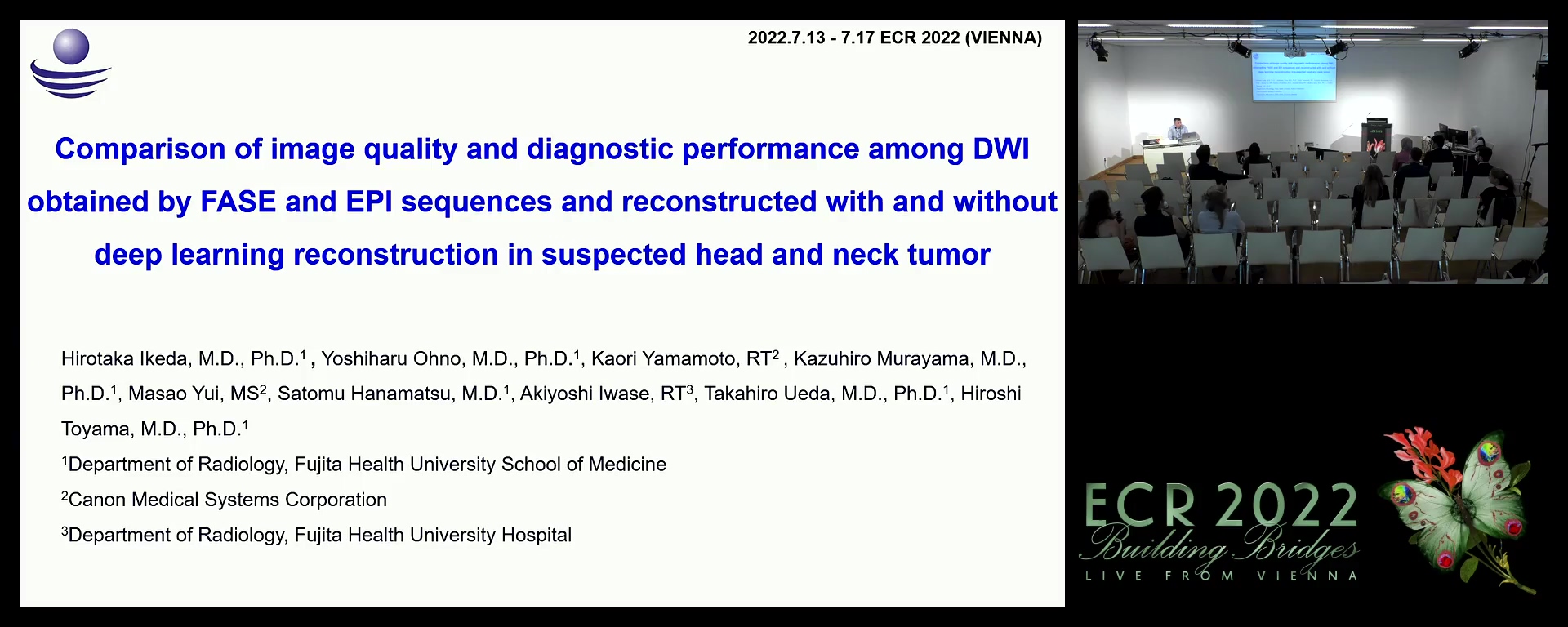
Comparison of image quality and diagnostic performance among DWI obtained by FASE and EPI sequences and reconstructed with and without deep learning reconstruction in suspected head and neck tumour
08:00Hirotaka Ikeda, Toyoake / JP
3
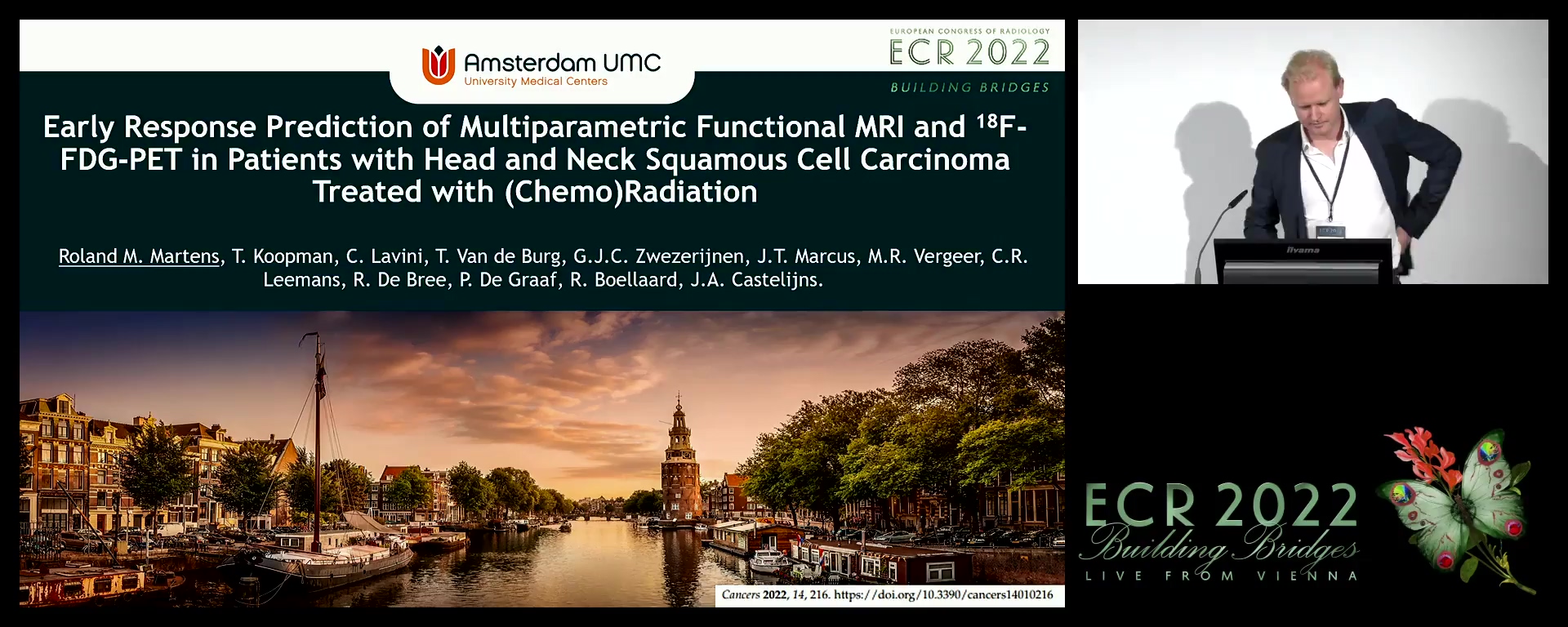
Early response prediction of multiparametric functional MRI and 18F-FDG-PET in patients with head and neck squamous cell carcinoma treated with (chemo)radiation
08:00Roland Martens, Amsterdam / NL
4

MRI-based assessment of the mylohyoid muscle in squamous cell cancer of the floor of mouth, a 7-point score method: T2wi vs STIR and T1+Gdwi
08:00Jasmina De Groodt, Trieste / IT
5

Radiomics model to predict radiation-induced temporal lobe injury of nasopharyngeal carcinoma before treatment
08:00Dan Bao, Beijing / CN
6
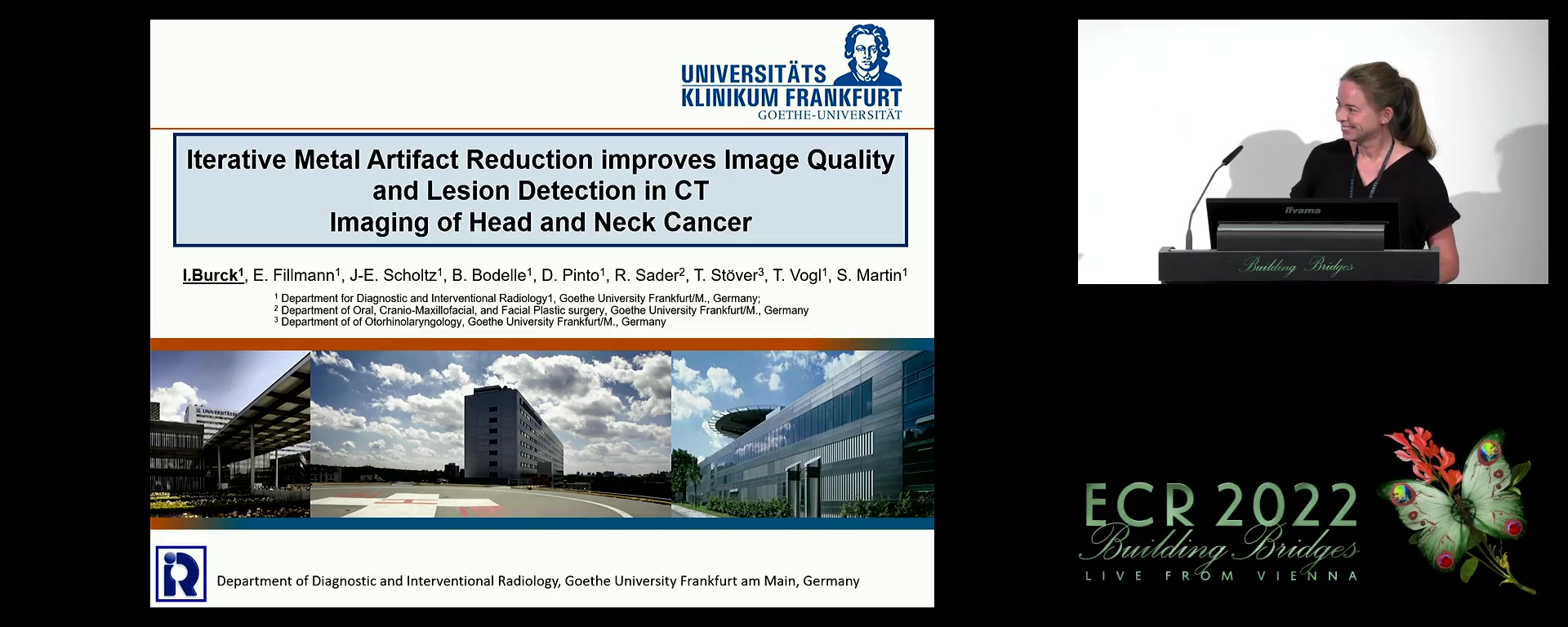
Iterative metal artifact reduction improves image quality and lesion detection in CT imaging of head and neck cancer
08:00Iris Burck, Frankfurt / DE
7
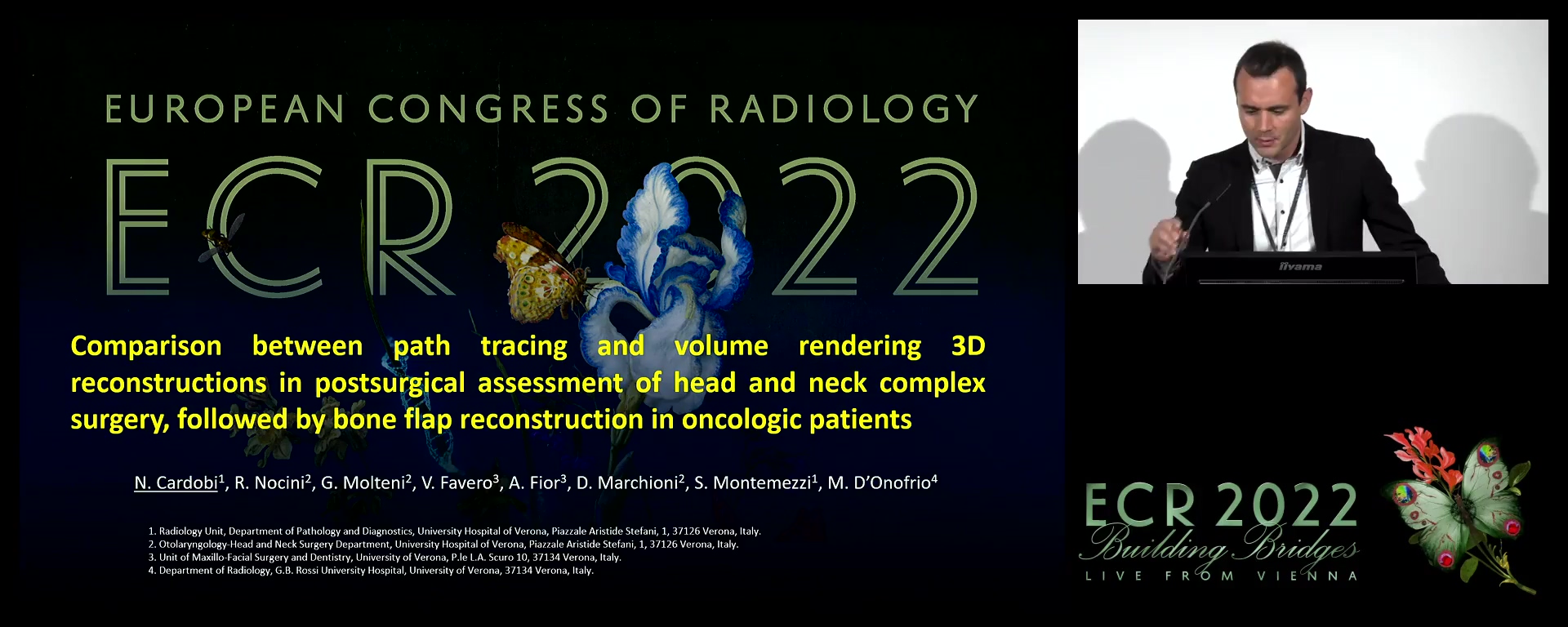
Comparison between path tracing and volume rendering 3D reconstructions in postsurgical assessment of head and neck complex surgery, followed by bone flap reconstruction in oncologic patients
08:00Nicolò Cardobi, Verona / IT
8
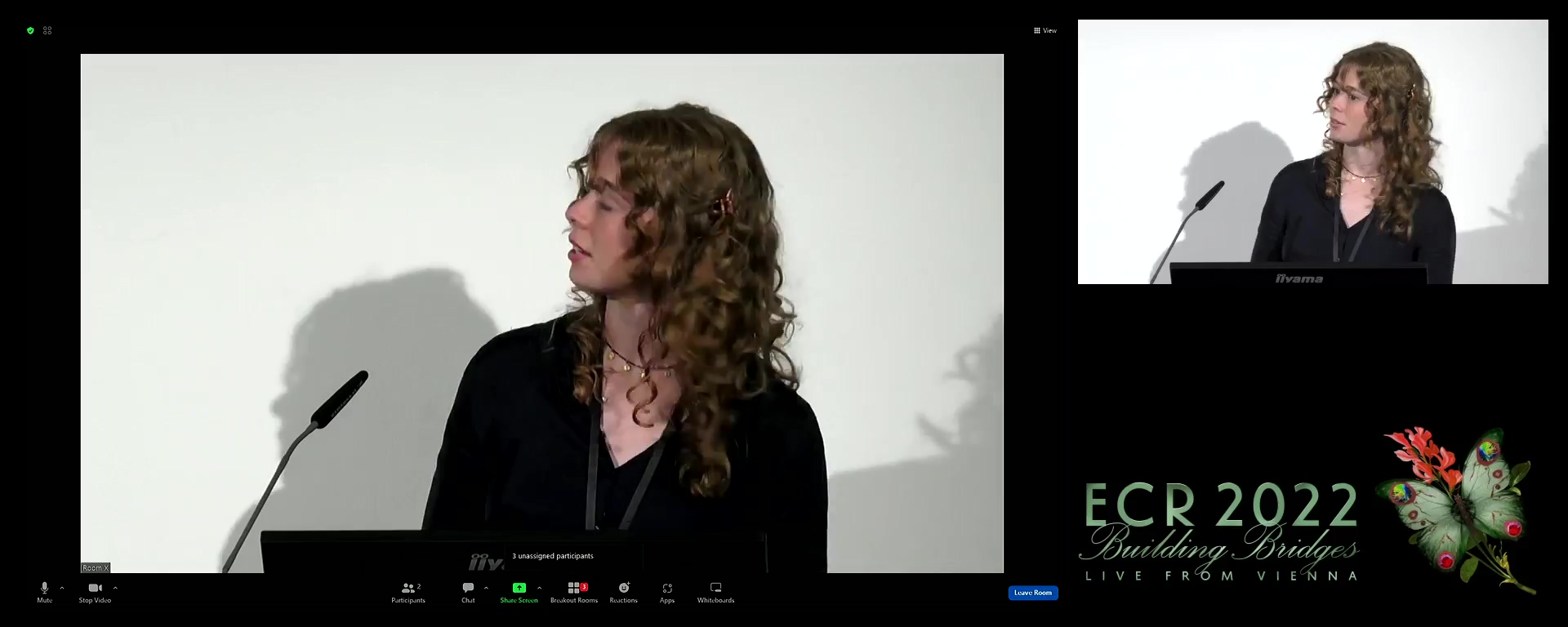
Determining Human Papilloma Virus-status of head and neck squamous cell carcinomas using magnetic resonance imaging: a systematic review of the current literature
08:00Hedda van der Hulst, Amsterdam / NL
9

Dynamic contrast-enhanced MRI in post-treatment head and neck squamous cell carcinoma: are MRI time signal intensity curves useful for differentiating recurrence from benign changes?
08:00Jannick De Tobel, Baulmes / CH
10
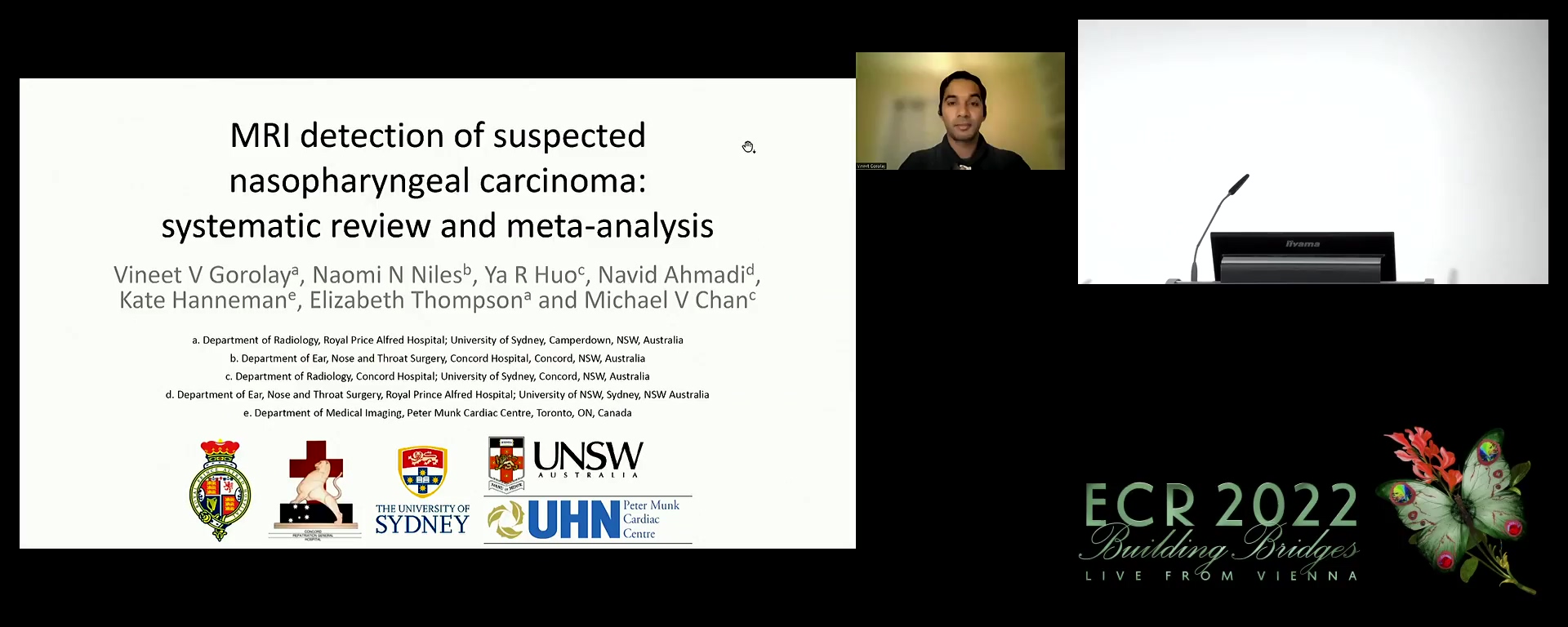
MRI detection of suspected nasopharyngeal carcinoma: a systematic review and meta-analysis
08:00Vineet Gorolay, Sydney / AU
11

Evaluation of the causal relationship between imaging-defined nodal features and event free survival in patients with oropharyngeal carcinoma
08:00Saad Qureshi, Neston / UK
12
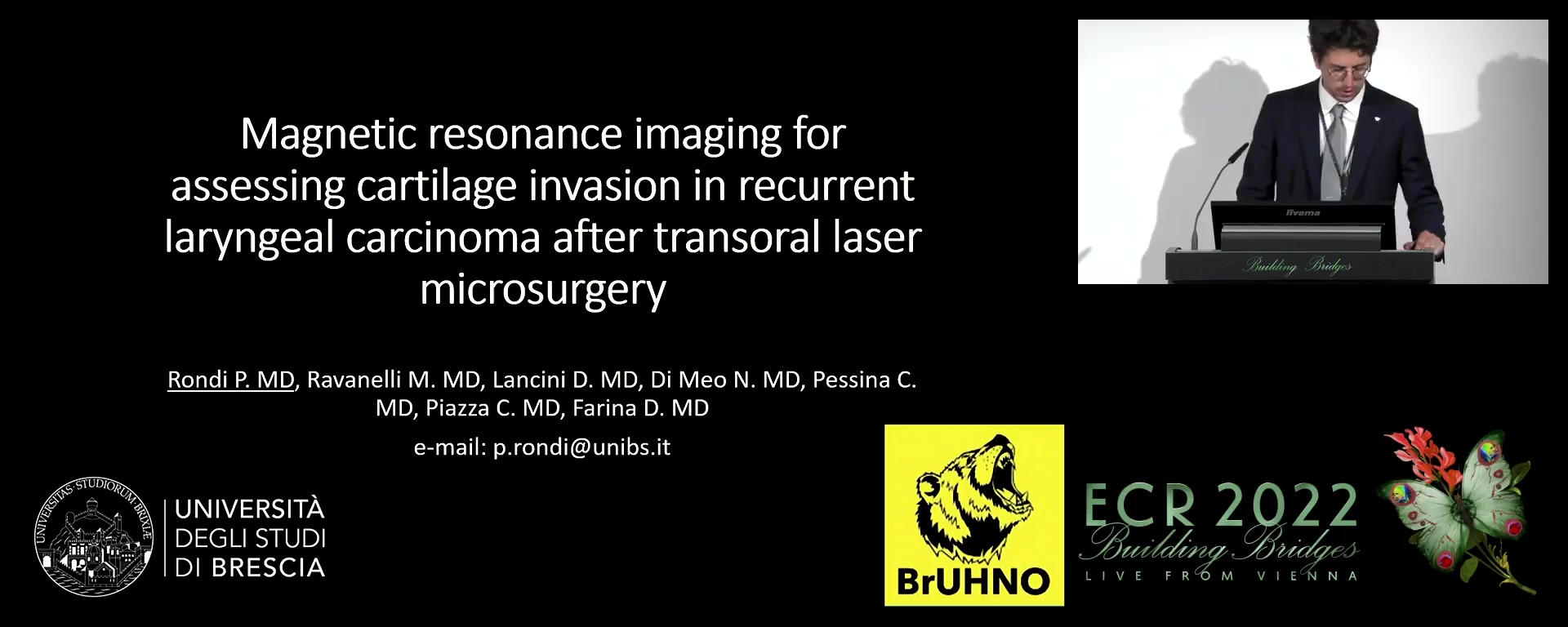
Magnetic resonance imaging for assessing cartilage invasion in recurrent laryngeal carcinoma after transoral laser microsurgery
08:00Paolo Rondi, Brescia / IT